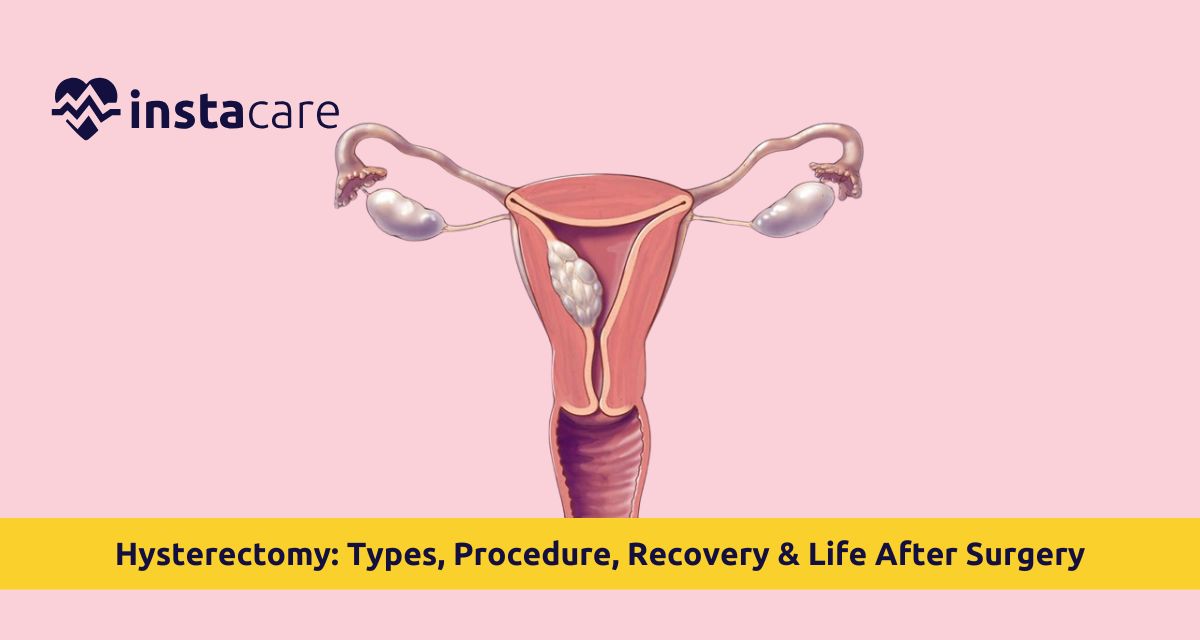Hysterectomy is an operation when the uterus of the woman is taken out. It may become one of the most common gynecological procedures in the world and is typically prescribed for most disorders of reproduction. It is of the utmost importance that the women who are going to undergo this extreme procedure know what is a hysterectomy, reasons for hysterectomy or why women undergo this surgery procedure, what type of operations, how one recovers from it, and what type of life one has after the surgery.
What is a Hysterectomy?
Hysterectomy is a surgical procedure in which the uterus is removed with the aim of bringing about the cessation of menstruation and barrenness. Hysterectomy is done in women for a variety of disorders including but not limited to endometriosis, uterine fibroids, pelvic pain,
menorrhagia, uterine prolapse, or ovarian, cervical, or uterine cancer. Unlike myomectomy, a surgical procedure in which fibroids are removed while preserving the uterus, a hysterectomy for most medical conditions is usually only a last option.
Hysterectomy Types
There are numerous types of hysterectomy and they are classified according to the extent of uterus and reproductive supportive tissue removed:
- Total Hysterectomy: All the uterus and cervix are removed in total hysterectomy. It is the most common type of hysterectomy and is most commonly performed for such disorders as uterine cancer or dysfunctional endometriosis.
- Partial (Subtotal or Supracervical) Hysterectomy: The upper section above the uterus is severed and dissected but not the cervix n partial hysterectomy. It can be performed if there is no cervical disease.
- Radical Hysterectomy: It may be performed in cancer. Cervix, uterus, vagina, and tissues around them like lymph nodes are severed and excised here.
- Hysterectomy with Bilateral Salpingo-Oophorectomy: It is the excision of the uterus, the fallopian tubes, and ovaries. It can be done when there is a suspected ovarian cancer.
Hysterectomy Procedures (Surgical Techniques)
The method used to carry out a hysterectomy will vary based on the patient's condition, her history, and why it needs to be done. Some of the most common procedures which are done include:
- Abdominal Hysterectomy: Large incision in the belly to take out the uterus in abdominal hysterectomy. It's typically done when the uterus is unusually large or if there is cancer. The hysterectomy recovery time would be extensive in relation to other operations.
- Vaginal Hysterectomy: Removal of the uterus by way of the vagina with no external cuts in vaginal hysterectomy. It is a low-trophic procedure, most commonly applied in cases of uterine prolapse, with preferably faster recovery.
- Laparoscopic Hysterectomy: Small incisions in the belly and a laparoscope to facilitate the removal of the uterus in laparoscopic hysterectomy. As minimal-trophic as can be with the same reduced post-op pain and quick recovery.
- Robotic-Assisted Laparoscopic Hysterectomy: Pretty much the same as laparoscopic but utilizing the assistance of robotic arms manipulated by the physician in robotic hysterectomy. More accurate and for more complex cases.
Steps of Hysterectomy Procedure
Despite the fact that the procedure itself will differ, the overall hysterectomy procedure steps employed are:
- Administration of anesthesia.
- Proper placement of incision.
- Separation of uterus from adjacent blood vessels and tissues.
- Excision of the uterus and other organs if necessary.
- Closure of incision.
- Follow-up and observation after surgery.
Hysterectomy Recovery
Hysterectomy recovery is very inconsistent depending upon the procedure done. Mainly:
- Abdominal Hysterectomy: 6-8 weeks to fully recover.
- Vaginal or Laparoscopic Hysterectomy: 2-4 weeks to fully recover.
Postoperative Instructions
- Rest and non-weight-bearing items as instructed.
- Gradual return to normal.
- Wound care such that it will not get infected.
- Good pain management with medication as prescribed by the doctor.
- Monitoring of hysterectomy complications, i.e., fever, abnormal discharge, or pain, on a regular basis.
- Follow-up with the doctor for medical care.
Fatigue, pain and mood changes are experienced by most women following convalescence. They need to be managed as indicated by the surgeon and the body given sufficient time to recover.
Life After Hysterectomy
Hysterectomy may induce actual physical and psychological changes in life. Surgery removed agonizing symptoms of chronic pain or bleeding from the lives of most women and significantly improved their quality of life. Life after hysterectomy may change a bit:
Hormonal Changes After Hysterectomy
When ovaries are removed by surgery, many hormonal changes after hysterectomy may occur. Women will immediately go into menopause regardless of age. It may have such effects as hot flashes, night sweats, mood swings, and dryness of the vagina.
- If ovaries are spared, endocrine function would not be damaged in most of the cases and menopausal symptoms would never abruptly appear.
- Hormone Replacement Therapy (HRT) can be given to women having severe symptoms of menopause after surgery.
Sexual Health
- Sexual dysfunction is enhanced after relief of pain or other pre-operative symptom.
- Sexual feeling or desire can become altered in some women.
- Anticipatory counseling to the partner and health worker counseling may increase sexual problems.
Emotional Well-being
- Females may lose something with body change or fertility.
- Support groups or counseling may aid emotional adjustment and counseling.
Risks & Complications
Like any other major surgery, hysterectomy is associated with some risk and complication like:
- Skin or underlying infection at incision site.
- Bleeding or excessive.
- Clotting in lung or in legs.
- Injury to other adjacent organs of uterus such as bowel or bladder.
- Premature menopause if both ovaries are removed.
- Psychological or emotional effect, i.e., anxiety or depression.
All of these complicatios are rare too, especially with less invasive surgery. But the patient is to be made aware of complications and choose them along with their surgeon.
When to Call Your Doctor
Be sure to watch for unusual postoperative signs. If you notice any of the following, call your doctor immediately:
- Severe and ongoing belly pain not eased by medication.
- Heavy clots or heavy vaginal bleeding.
- Fever, chills, or redness around your incision - infection.
- Painful or painful urination.
- Shortness of breath or chest pain.
- Swelling, redness, or tenderness of your legs (which could be a sign of a blood clot).
- Taking early action can prevent serious complications.
Conclusion
Hysterectomy is a life style modification that removes signs of sickness in most women with chronic gynecologic illness. Hysterectomy surgery, operative method, postoperative behavior after operations, and postoperative life-style modification instruction educates women with informed decision-making data.
Although fear of surgery casts a shadow, assurance of well-being and better health most frequently transcends fear and life-style changes which are temporary in nature. Preoperative education counseling, therapy visitation, and health care provider communication can familiarize one with hysterectomy procedure and render it a nice experience.
Please book an appointment with the
best Gynecologist in Lahore, Karachi, Islamabad, and all major cities of Pakistan through
InstaCare, or call our helpline at 03171777509 to find the verified doctor for your disease.

